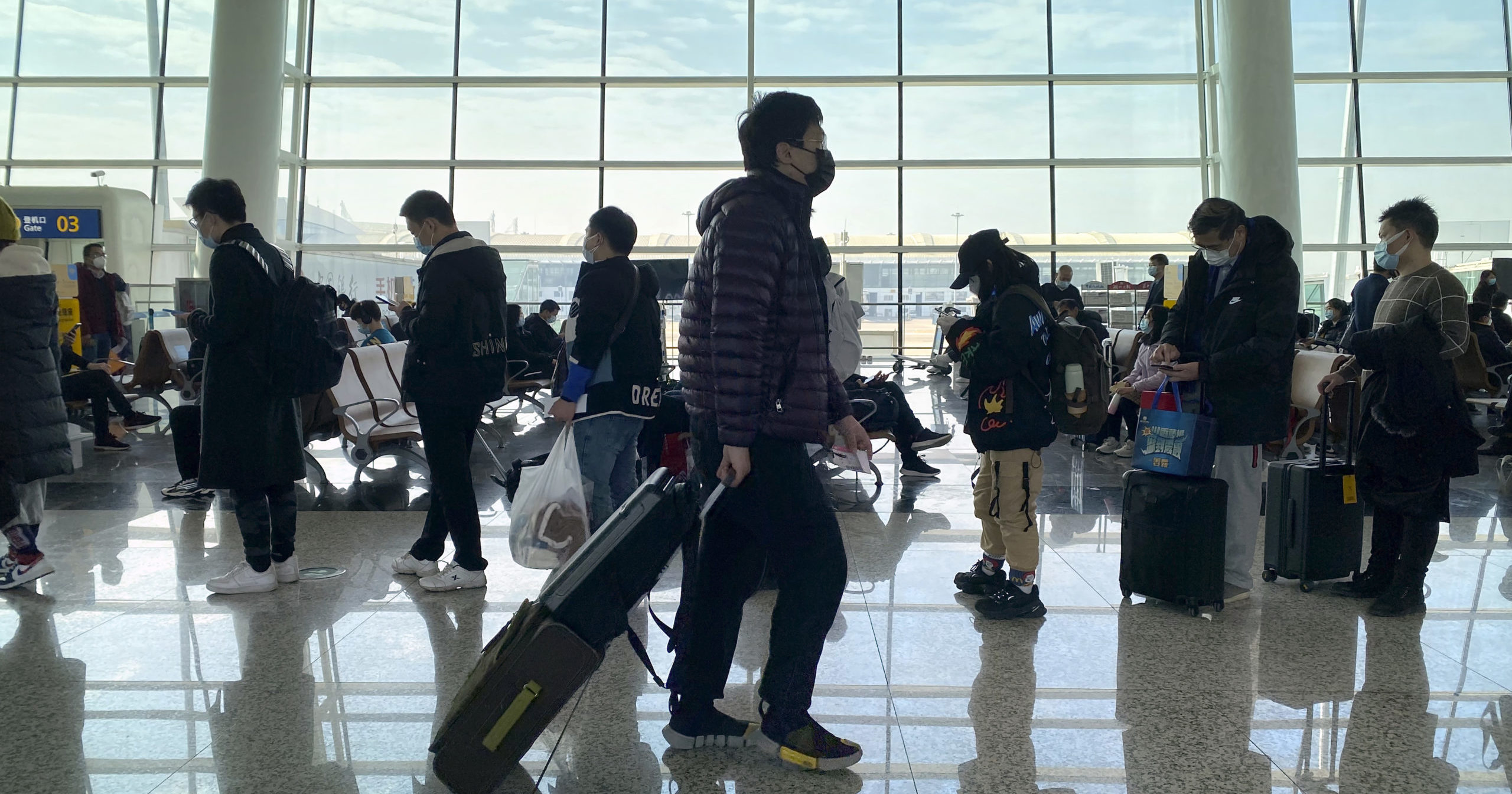
International Investigators Arrive in Wuhan to Get to the Bottom of COVID Outbreak
A global team of researchers arrived Thursday in the Chinese city where the coronavirus was first detected to conduct an investigation into its origins amid uncertainty about whether Beijing might try to prevent embarrassing discoveries.
The group sent to Wuhan by the World Health Organization was approved by President Xi Jinping’s government after months of diplomatic wrangling.
The virus is believed to have killed 2 million people worldwide since it jumped to humans from bats or other animals, most likely in China’s southwest.
The ruling Communist Party, denying accusations it allowed the virus to spread, has suggested it came from abroad, possibly on imported seafood, but international scientists reject that.
Fifteen team members were to arrive in Wuhan on Thursday, but two tested positive for COVID-19 before leaving Singapore and were being retested there, WHO said in a statement on Twitter.
The rest of the team arrived in Wuhan and walked through a makeshift clear plastic tunnel into the airport. The researchers were greeted by airport staff in full protective gear, including masks, goggles and full body suits.
They will undergo a two-week quarantine as well as a throat swab test and an antibody test for COVID-19, according to state broadcaster CCTV. They are to start working with Chinese experts via video conference while in quarantine.
The team includes virus and other experts from the United States, Australia, Germany, Japan, Britain, Russia, the Netherlands, Qatar and Vietnam.
A government spokesman said this week they will “exchange views” with Chinese scientists but gave no indication whether they would be allowed to gather evidence.
China rejected demands for an international investigation after the Trump administration blamed Beijing for the virus’ spread.
After Australia called in April for an independent inquiry, Beijing retaliated by blocking imports of Australian beef, wine and other goods.
A single visit by scientists is unlikely to confirm the virus’ origins; doing so is typically an exhaustive endeavor that takes years of research including taking animal samples, genetic analysis and epidemiological studies.
The Chinese government has tried to stir confusion about the virus’ origin. It has suggested, with little evidence, that the outbreak might have started with imports of tainted seafood, a theory rejected by international scientists and agencies.
“The WHO will need to conduct similar investigations in other places,” an official at China’s National Health Commission, Mi Feng, said Wednesday.
Some members of the WHO team were en route to China a week ago but had to turn back after Beijing announced they hadn’t received valid visas.
While that might simply have been a “bureaucratic bungle,” the incident “raises the question if the Chinese authorities were trying to interfere,” Adam Kamradt-Scott, a global health professor at the University of Sydney, said.
A possible focus for investigators is the Wuhan Institute of Virology in the city where the coronavirus first emerged. One of China’s top virus research labs, it built an archive of genetic information on bat coronaviruses after a 2003 outbreak of severe acute respiratory syndrome.
According to WHO’s published agenda for its research, there are no plans to assess whether there might have been an accidental release of the coronavirus at the Wuhan lab.
An AP investigation found the government imposed controls on research into the outbreak and bars scientists from speaking to reporters.
Although it may be challenging to find precisely the same coronavirus in animals as in humans, discovering closely related viruses might help explain how the disease first jumped from animals and clarify what preventive measures are needed to avoid future pandemics.
The Western Journal has reviewed this Associated Press story and may have altered it prior to publication to ensure that it meets our editorial standards.
Truth and Accuracy
We are committed to truth and accuracy in all of our journalism. Read our editorial standards.
Advertise with The Western Journal and reach millions of highly engaged readers, while supporting our work. Advertise Today.












